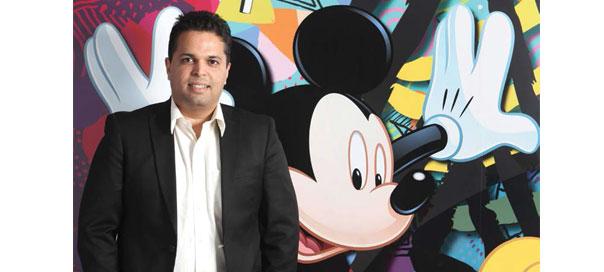Continuing our special series on media marketers, this week we talk to Vijay Subramaniam, Vice President and Head of Content & Communication, Media Channels, Disney India, who says its marketing is driven towards having conversations with consumers, and content is the new marketing tool
In July 2015, Disney India terminated its agency contract with IndiaCast Media Distribution and set up an internal team to manage the distribution of its eight channels – Disney Channel, Disney Junior, Disney XD, Hungama TV, Bindass, Bindass Play, UTV Movies and UTV Action – spanning the kids, youth and movie genres. Commenting on what has been the progress since then, Nikhil Gandhi, VP and Head - Revenue, Media Networks, Disney India says, “We are now a sizeable bouquet, uniquely placed in the branded entertainment space. In the last six months, we educated the market about us as one united bouquet. That was a huge calling for a lot of the platforms who saw us together as one big entity for the first time.” He adds, “We have a 6% viewership share and felt it was the right time to get the right price out of the market. When you get distributed with bouquets, you don’t really know whether you are getting the right price for your value. So the first year was about getting that value back, about value correction and then growing.” The move paid off as the network has been able to lower carriage expenses by 30-35% and also grow subscription revenues by 14-15%.
THE DIGITIZATION PROCESS
Talking about the digitization process, Gandhi says, “The real effect of digitization has not really seen the light of day.” With the digitization process under way, the focus now is on addressability, packaging and gross billing between the MSO (multi system operator) and LCO (local cable operator) so that ARPUs (average revenue from user) and subsequently subscription revenues go up. Currently, the ratio between ad sales and subscription revenues is 55:45, and Gandhi says that the efforts are aimed on turning around the equation. He adds, “At a fundamental level, this should be a pay subscription business, and not an ad sales business. We want to change the whole equation between ad sales and subscription and we moved that needle up 5% this year. We have devised a strategy to move into a scenario where subscription needs to supersede and become a significant part of the revenue portfolio and ad sales comes and sits on top of it like the icing.” He adds, “Our ad sales has grown by 15% and looking ahead, we expect it to grow by another 15%.”
ON THE GROUND
At the ground level, Disney has concluded long term carriage deals with major distribution platforms players – both direct-to-home players, MSOs and headend-in-the-sky (HITS) platform and currently serves over 3,000 operators. Says Gandhi, “Turning around so many contracts, negotiating, getting the right price and right value was a testing game.” Currently, Disney reaches close to 70 million homes and with Phase IV of digitization on the anvil, the network is looking to go deep into the country and increase its penetration in areas where it currently does not have a presence. With BARC putting out rural data, Gandhi sees this as “a huge opportunity”. With the NCCS classification being used for BARC data, Gandhi believes that broadcasters have to now take a hard look at their product mix to really define whether it is an SEC AB or SEC ABC product. He says, “We have chosen a new geography on the back of BARC, digitization and the product getting matured. Bindass was earlier a 1 million plus, SEC AB phenomenon. Today it is an all urban phenomenon and is SEC ABC. At a broadcast level, we will be as broad as possible and at a product level, we will choose our geography.”
the strong brand value of all the brands in its portfolio and content. He says, “We are investing a lot in the content. We are a very profitable business and now want to take the whole business into a different direction. There are a slew of new channel launches that we are working on in the next 12-18 months. We believe that we are in a certain position of strength as compared to the other broadcasters. We don’t have a GEC, but we are still there and running it quite efficiently as a business.”
BY SIMRAN SABHERWAL
























